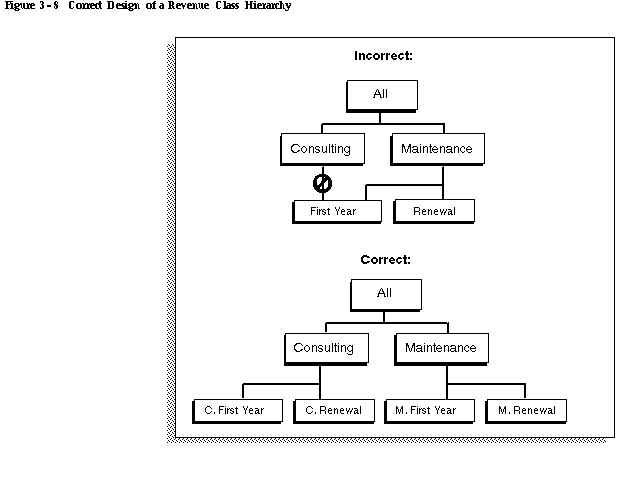| Previous | Next | Contents | Index | Navigation | Library |
A revenue class hierarchy makes it possible to pay compensation for a broad revenue class without exhaustively specifying all of its subclasses on the compensation plan.
For example, suppose that Global Computers salesperson Pat Smith receives compensation for all PC revenue, while representative Chris Jones is paid only for selling Multimedia ATO PCs. To implement this compensation structure in Oracle Sales Compensation, Global assigns the PC revenue class to Smith's plan and assigns MM ATO to Jones' plan.
When both salespeople sell an ATO Multimedia PC, Oracle Sales Compensation classifies the compensation transaction as MM ATO revenue. This revenue class matches the class on Jones' plan exactly, so Jones receives compensation.
To determine whether Smith receives compensation, Oracle Sales Compensation uses the revenue class hierarchy to try to find a match with a revenue class on Smith's plan. As shown in Figure 3 - 7, MM ATO rolls up to PC, so Smith receives compensation.
Oracle Sales Compensation does not classify the compensation transaction if it finds more than one revenue class match (Figure 3 - 8). Thus, ensure you design your hierarchy so that a given revenue class has no more than one parent class.

| Previous | Next | Contents | Index | Navigation | Library |